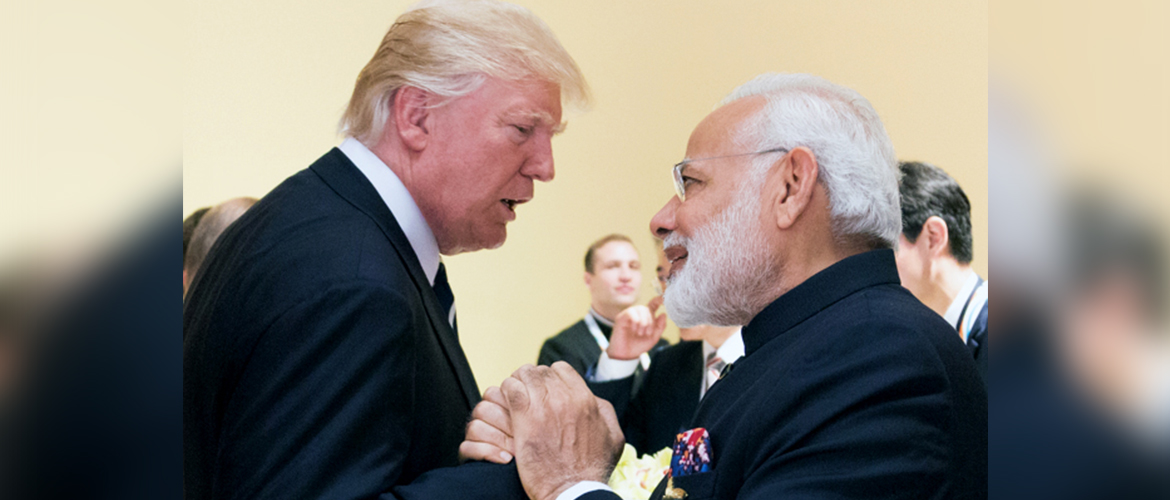GSP-Back in Good Books?
September 24, 2019 | Expert Insights

Background
Generalised System of Preferences (GSP) is the largest and oldest US trade preference programme which provides a duty-free import scheme to developing nations. It covers 120 beneficiary countries and includes 2000 items in motor vehicle parts, jewellery, electric motors, and textiles. All of these have a large manufacturing base in India and provide employment to millions.
India was the largest beneficiary nation under the GSP with USD 5.7 billion in imports to the US given duty-free status, representing about 11% of India’s $54.4 billion of US exports. India’s total benefits from the GSP tariff exemptions amounted to $260 million in 2018.
In June, the US President signed a presidential decree to cut off India’s tariff-free access to US market. As per a notification issued by the office of the US Trade Representative (USTR) Indian exports no longer qualified for GSP benefit under the updated and stricter criteria.
Analysis
The Indian diaspora in America is a four million-strong community and the second-largest Asian group after the Chinese. It is a sizeable voting segment. AFP quoting polls conducted by the Asian American Legal Defence & Education Fund said that some 84 % of Indian-Americans voted in 2016 for Trump's rival Hillary Clinton, making them among the most Democratic-leaning ethnic groups. The compulsions of electoral politics will see both parties vying to woo the Indian diaspora with concessions and promises for their native land.
The recent move by a bipartisan group of 44 lawmakers led by Congressmen Jim Himes and Ron Estes to write to the USTR Robert Lighthizer to restore India’s status as a beneficiary under the Generalised System of Preferences is perhaps a positive sign for reinstatement.
The cancellation of India’s GSP benefits was provoked by two petitions- one from the National Milk Producers Federation and the U.S. Dairy Export Council, and the other from the Advanced Medical Technology Association. These petitions brought to the notice of the USTR wide array of Indian imposed trade barriers that could create negative effects on US commerce.
India, on its part, has called to question the petitions by the Dairy Council as being a self-inflicted injury. In contravention to Indian requirements, US dairy exporters decline to furnish necessary certification that their dairy products are from animals not being fed fodder containing internal organs.
As regards the dispute with US manufactures of medical high tech items, the differences arose when India imposed price caps in 2017 on coronary stents and knee implants to make them more affordable.
The Indian stance on data sovereignty is also believed to be another contentious issue.
According to the Coalition for GSP’s data, in July, the loss of GSP for India cost American companies about USD 30 million. The benefits of GSP were not entirely one-sided as they resulted in cheaper products for US customers by removing duty costs which would have been otherwise added as tax to the retail product. Even with the loss of GSP status, imports from India increased by over 40 per cent. The Coalition for GSP noted that this could be the result of companies shifting sourcing away from China. “Indian exporters are thriving while American companies are stuck paying USD 1 million a day in new tariffs.”
Counterpoint
As a country aspiring to become a 5 trillion economy by 2024, it may not be the best way forward for India to rely on duty exemptions in the company of the poorest nations of the world. GSP dates back from 1974 and in the last five-decade, the Indian industry should have achieved market competitiveness on merit. GSP withdrawal may perhaps be in the best interests of the Indian industry in the long run.
GSP has at times been used as a coercive tool to force economic and policy changes in the beneficiary countries which may not always be in the interest of the beneficiary country.
Assessment
- Withdrawal of GSP had a limited effect on India as most of the products on the list were low end manufacturing goods. The losses of these small businesses from US business was absorbed by the domestic market. However, they may feel the pinch now that there is a slump in the domestic market too.
- India’s relations with the US has many dimensions, not the least being its large and dynamic diaspora. If the response of both Republicans and Democrats are to be seen in the recently held Howdy Modi event, the letter requesting for reinstatement of GSP will get wider acceptability amongst US lawmakers. Texas Senator John Cornyn, has also hinted that both countries may be able to sort out their trade differences.
- Lastly, we feel that the GSP is likely to be reinstated as the move is hurting both the US customer and industry. India on its part will have to make some concessions to accommodate US trade interest.
Image Courtesy: wikimedia commons








Comments